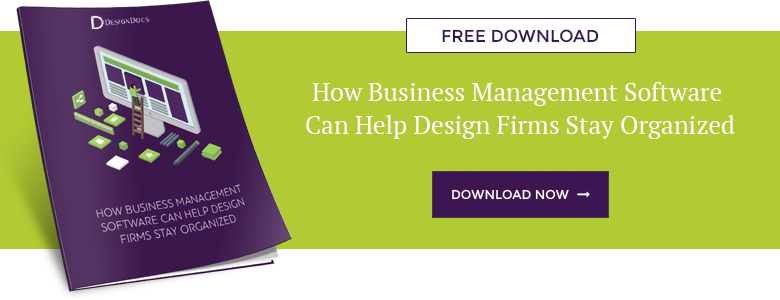As a professional, business management is important: you want to be sure that your business is running as smoothly and efficiently as possible. Sometimes, that means upgrading your software. Plenty of people spring for generic accounting software to manage their firm; most of the time, it gets the job done and the price tag is often attractive, especially for small businesses. But does the off-the-shelf option really offer you the most bang for your buck? Chances are it’s costing you a lot more than you think it is—time, money, and frustration.
One-Stop Solutions
Many software vendors will advertise their products as being “versatile” enough for just about any business or industry. What that really means is you’re getting a generic program, like Quickbooks, that does just the minimum—it doesn’t include any specialized features specific to your industry. For design firms, that can mean the simple practice of taking a deposit and a retainer—a staple of the industry—is suddenly more complicated than it needs to be.
Most of these generic programs also put other constraints on those in the design industry. Many will limit the number of items you can enter into your project and often the reports that you can run from these programs are also limited to accounting-focused outputs like financial statements. Options for reports that can be run per job are also limited.
Saving You Time?
Since generic software is so basic, “customization” becomes very necessary. That usually means starting from scratch for each new document, meaning you’ll need to manually enter things like markups and discounts, adding them line by line and remembering to transfer them between documents. Obviously, there’s huge potential for error in this method—which can mean you spend more time sorting things out and fussing with documents that don’t do what you want or need, instead of running your actual business.
Even when you do manage to customize a document, it sometimes doesn’t look very neat or professional, precisely because the document wasn’t built to handle the unique characteristics of design businesses.
The Advantage of Design Firm Management Software
Now that the shortcomings of generic, off-the-shelf software solutions are in plain sight, it might seem that those programs don’t really offer a solution at all! What’s a firm to do? You need software to run your business, but these generic programs just don’t fit your needs as a design business.
That’s where design firm business management software comes in. This software is designed specifically with design firms in mind—and all of the unique aspects of the business are reflected in the program capabilities.
Using a program specifically built with design firms in mind can help you:
- Look professional as documents (with pictures!) are generated for you—meaning you don’t need to waste time fussing with them to make them look great.
- Save time by automatically distributing deposits to items and then applying those amounts when the client is invoiced.
- Get accurate calculations for all documents automatically.
- Let your business thrive by entering more items per project and have an unlimited number of projects.
- Run reports that are design focused, including financial statements and essential designer reports like project summaries, time analysis, outstanding payments, order status, profit analysis by project, expense analysis, and more.
Want to know more about what a design firm-focused software solution can do for your business? Check out more features here.



